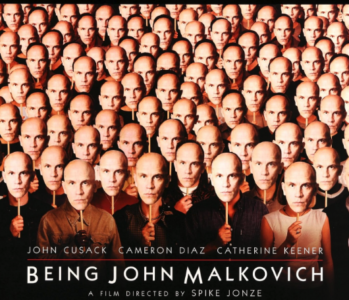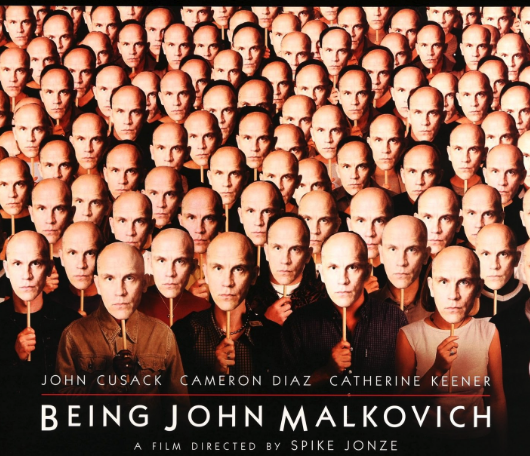 Last Wednesday at Ricoh’s Interact event I was asked to stand in for Marco Boer of I.T. Strategies, which is not an easy thing to do. I wished I could find a portal into Marco’s mind like John Cusak found in “Being John Malkovich.” But, at full caffeination and with Marco’s excellent slides I tackled the topic of “Production toner and inkjet technology: Competitive or complimentary?”
Last Wednesday at Ricoh’s Interact event I was asked to stand in for Marco Boer of I.T. Strategies, which is not an easy thing to do. I wished I could find a portal into Marco’s mind like John Cusak found in “Being John Malkovich.” But, at full caffeination and with Marco’s excellent slides I tackled the topic of “Production toner and inkjet technology: Competitive or complimentary?”
While we don’t talk a lot about toner here on Inkjet Insight – the topic is relevant. Since we focus our efforts on helping companies to evaluate the suitability of inkjet to their business (and optimizing inkjet installations) it’s important to say, straight out, that sometimes inkjet is just not suitable. There are pros and cons to toner and inkjet in general, and pros and cons for specific companies.
Inkjet quality is no longer a concern relative to toner or offset in most application segments. We focus a lot on the productivity benefits of inkjet, however, the real efficiency gains only kick in for companies printing 3 to 10 million pages per month. The majority of printing companies can’t justify a minimum implementation price tag of a million USD (once machine, software, professional services and training are factored in.) While the range of compatible substrates is growing on many models, there are still limits as compared to toner.
The biggest challenges with toner technology are speed and running cost. An electrostatic process does not function well at widths beyond about 20 inches, and speeds have not advanced past 250 feet-per-minute. Together, this places a pretty hard upper limit on productivity. This limit, along with higher maintenance complexity, leads to higher running costs than inkjet. This situation is not likely to change given that most toner R&D investment has been siphoned off to drive inkjet innovation.
So, is inkjet eating toner’s lunch?
Yes and no. According to I.T. Strategies’ research, production inkjet is going to continue to pull volumes from monochrome toner and, increasingly, from offset presses. However, color toner devices should maintain their current page volumes and even grow slightly through 2023. This is because both toner and inkjet digital presses will pull pages from offset during that period and there is the potential for some “net new” pages as well. I.T. Strategies estimates that digital pages will have grown by about 244 billion pages between 2017 and 2022. That is a tide that is lifting all digital boats except for mono toner.
In some areas there are clear winners in the tug-of-war between inkjet and toner for digital pages. For monthly volumes over 3 million, inkjet is almost always the winner. For lower volumes, or mid-to-high volumes with small batches running on different papers, or with a mix of papers in a single job, color toner wins. The real tough evaluations are happening in the sheet-fed inkjet arena where Komori, Konica Minolta and Fujifilm are challenging HP Indigo and Xerox iGen for commercial work on a more varied range of substrates than roll-fed presses can handle and in a format that is familiar to offset shops. However, roll-fed devices like the Canon ProStream, Ricoh Pro VC 70000 and Screen Jet520HD that can print on coated stocks without pre-treatment are also pulling commercial volumes for jobs on paper weights as high as 250 gsm. But, that takes us back to the “do you have the volume and can you afford it” discussion.
Customers say there is a place for both
At Interact, we heard from a number of customers. Quik Print of Oklahoma City is still firmly in the toner camp. Not only that, they prefer multiple lower duty cycle machines to fewer high capacity machines because they need to handle many disparate jobs simultaneously. They also wanted the option of having a 5th color station (neon is pretty cool.) Additional colors beyond CMYK is another area that is more difficult to accomplish on inkjet because every drop you lay down is another drop you have to dry.

You don’t see this on inkjet
Sepire, a brand spanking new marketing services company specializing in complex, compliance driven print and multi-channel solutions is covering its bases with inkjet plus toner. Sepire opened their doors with 3 presses, the Ricoh Pro VC70000 inkjet, plus Pro C9210 and RICOH Pro 8220 toner presses. They didn’t skimp on the software either.
As long as there are many types of print organizations, there will be a need for many types of printing devices. One size does not fit all. Your mileage may vary. Definitely see the dealer for details.
In the future, I would prefer to present with Marco Boer rather than “as” Marco Boer – but this was a great opportunity to get back to the dryer (toner) side of digital printing for a change!
Note for the movie fans: I had to limit my time “Being Marco Boer” so that I didn’t end up in a ditch by the New Jersey Turnpike.

